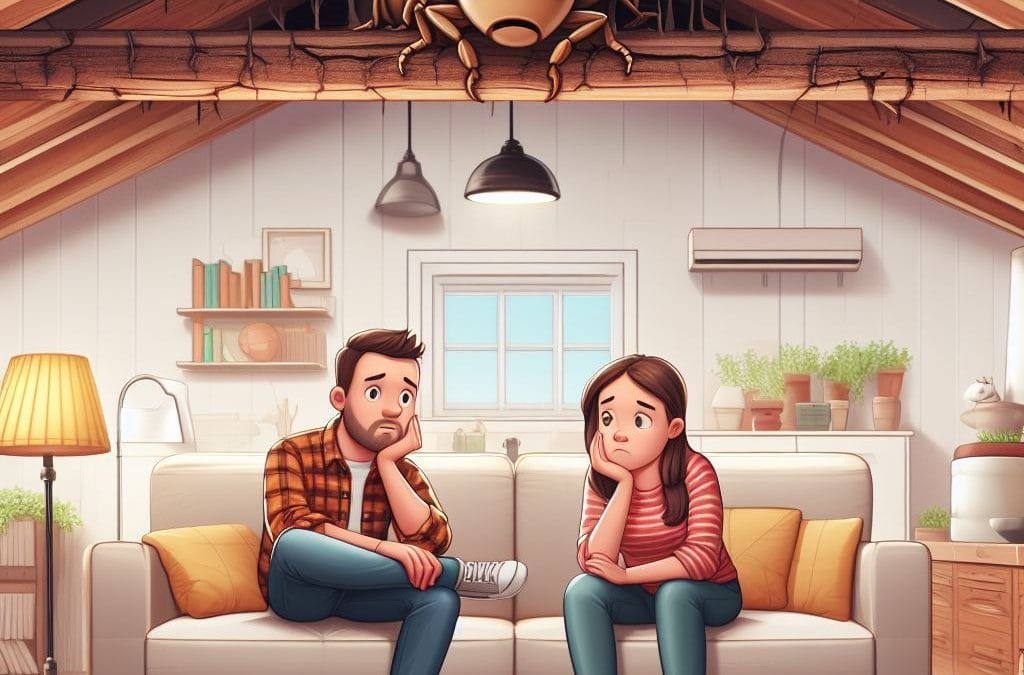What can be done?
The hidden vices of a house are practically undetectable during the few visits we make to buy it.
Let’s first go with the legal responsibilities as far as homes with hidden defects are concerned:
In the sale of a home, there are legal responsibilities associated with hidden defects. These defects are serious defects that are not apparent on a typical inspection and that the seller knows about but does not disclose to the buyer. Laws vary by country, but in many places, the seller is required to disclose any hidden vices they know about.

Typical legal responsibilities in the case of homes with hidden defects may include:
- Duty of Information: The seller must disclose any hidden problems or defects that may affect the value of the property or its normal use. This duty of information may also apply to past problems that have been repaired.
- Eviction guarantee: This implies that the seller guarantees the buyer that they will have peaceful and legal possession of the property, without problems of third parties claiming rights to it. If such an issue were to arise, the seller might be responsible for compensating the buyer.
- Warranty for hidden defects: In some places, sellers are also required to ensure that the property is free of hidden defects, which means that they must be held responsible for certain serious defects that were not disclosed to the buyer.
If a hidden defect is discovered after purchase, the buyer may have the right to take legal action. These actions may include the cancellation of the sale, the repair of the defect at the seller’s expense or financial compensation.
It is crucial for sellers to be honest and transparent in disclosing information about the property. Not only does this meet your legal obligations, but it also helps build a foundation of trust with buyers.
Can pests be considered hidden vices?
Yes, pests can be considered hidden vices in the context of selling a property. Pests, such as infestations of termites, cockroaches, rodents, or other harmful organisms, are considered hidden defects if they are not visible on a cursory inspection and the seller had knowledge of them but did not disclose them to the buyer.
In many places, the seller has a legal obligation to disclose the presence of pests if they have knowledge of them, as they can significantly affect the value and habitability of the property. If the seller intentionally conceals the presence of a pest and the buyer discovers the problem after purchase, the buyer may have legal grounds to take legal action.
What are the most common pests in a
housing?
Pests in homes with hidden defects can vary depending on geographic location and specific environmental conditions. However, some pests are common in many areas:
- Cockroaches: They are very adaptable and can inhabit small spaces, spreading diseases and being difficult to eradicate once established.
- Rodents: Rats and mice can be a problem in many homes. They damage structures, transmit diseases, and can reproduce quickly.
- Ants: Although less structurally damaging, ant infestations can be annoying and difficult to control.
- Spiders: Although they generally do not pose a significant danger, spiders can be unpleasant, and in some cases, their bite can be problematic.
- Bed bugs: They have had a resurgence in recent years. They are difficult to detect and eradicate, and their bites can be irritating.

Signs of infestation
- Excrement: Feces are a clear sign of infestation. For example, mouse droppings are small and elongated, while cockroach droppings are smaller and darker.
- Traces of bites or gnawings: Gnawed wires, damaged furniture, or bite marks on materials such as wood or plastic are signs of rodents.
- Traces of movement: Grease trails, dark stains, or dirt marks along walls or around gaps and crevices can indicate the presence of rodents.
- Nests or burrows: Rodents often build nests out of soft materials such as paper, cloth, or grass. Termites build mud tunnels or wooden galleries.
- Unusual odors: Persistent and unpleasant odors, such as the smell of strong urine in specific areas, can be a sign of pests.
- Paw marks or traces: Paw prints, drag marks, or visible traces in fine dust around access areas may indicate pest activity.
- Blood or stool stains on sheets or furniture: Indicative of the presence of bed bugs.
- Sudden appearance of insects: The sudden appearance of insects in large numbers, such as ants or cockroaches, can be an indication of an infestation.
- Unusual sounds: Scratching, gnawing or moving noises on the walls or ceilings may suggest the presence of rodents or other pests.
Remember three important things
- Claim if you have bought a house and come across unexpected tenants
- During the first few weeks, look for traces of possible pests to make sure
- Professionals can help you get your home free of pests


